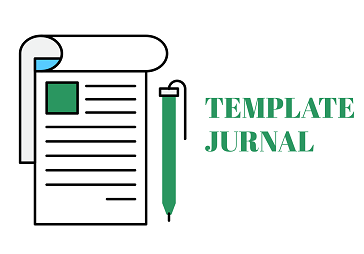Edukasi Pemakaian Plastik sebagai Kemasan Makanan dan Minuman Serta Risikonya terhadap Kesehatan pada Komunitas di Kecamatan Bungus Teluk Kabung, Padang
Abstract
ABSTRAK: Paparan terhadap zat tambahan pada plastik (plasticizers) berdampak luas terhadap kesehatan, khususnya pada janin dan anak. Plastik digunakan secara luas sebagai kemasan makanan dan minuman. Mengetahui bagaimana memilih dan menggunakan jenis plastik yang tepat yang akan berkontak dengan makanan penting untuk menghindari risiko paparan bahan kimia berbahaya pada plastik. Program pengabdian ini bertujuan untuk melakukan diseminasi temuan ilmiah terkini mengenai dampak plasticizers terhadap kesehatan melalui program edukasi masyarakat yang ditargetkan pada pemuka masyarakat di Kecamatan Bungus Teluk Kabung, Padang. Edukasi disampaikan dalam bahasa lokal dan diikuti dengan diskusi bebas dengan peserta. Dampak program dinilai menggunakan kuesioner pra- dan pasca-intervensi. Analisis respon pra-intervensi menunjukkan bahwa sebagian besar peserta tidak mengetahui cara menggunakan plastik yang benar sebagai kemasan makanan dan minuman dan tidak mengetahui klasifikasi plastik. Namun, sebagian besar setuju bahwa penggunaan plastik harus dibatasi dalam pemrosesan makanan dan usia anak rentan terhadap bahaya plasticizers. Analisis pasca-intervensi menunjukkan terjadinya perubahan respon peserta. Disimpulkan bahwa program edukasi ini secara efektif memodifikasi sikap dan pengetahuan peserta mengenai risiko penggunaan plastik dalam pemrosesan dan kemasan produk makanan dan minuman.
Kata Kunci: edukasi, kesehatan, makanan, minuman, plastik
ABSTRACT: Environmental exposure to plasticizers has a wide health impact, particularly to the fetus and children. Plastics are widely used as food wrapping and beverage container. Knowing how to choose and to use the right kind of plastics for contact with foods and drinks is important to safeguard against the health-risks imposed by chemicals in plastics. Our objective was to disseminate scientific findings on the health impact of plasticizers through a community education program targeting key persons in the District of Bungus Teluk Kabung, Padang. Educational material was presented in local language, followed by a free-flow discussion with participants. We assessed the impact of the program by using pre- and post-intervention questionnaire. Analysis of pre-intervention responses showed that most participants did not know how to correctly use plastics as foods and drinks container and had no knowledge on the classification of plastics. However, most agreed that the use of plastics for food processing should be limited and that children are susceptible to the harmful effects of plasticizers. Post-intervention analysis showed a shift in participants’ responses. In conclusion, our program effectively modifies participants’ knowledge on the health risk imposed by using plastics in processing and keeping consumable products.
Keywords: education, health, food, drink, plastics
Downloads
References
Calafat AM, Ye X, Wong LY, Reidy JA, Needham LL. 2008. Exposure of the U.S. population to bisphenol A and 4-tertiary-octylphenol: 2003-2004. Environmental Health Perspective. 116:39-44.
Rudel RA, Gray JM, Engel CL, Rawsthorne TW, Dodson RE, Ackerman JM, Rizzo J, Nudelman JL, Brody JG. 2011. Food packaging and bisphenol A and bis(2-ethyhexyl) phthalate exposure: Findings from a dietary intervention. Environmental Health Perspective. 119:914-920.
National Toxicology Program-Center for the Evaluation of Risks to Human Reproduction (NTP-CERHR). 2008. Monograph on bisphenol-A. U.S. Department of Health and Human Service.
Vandenberg LN, Maffini MV, Sonnenschein C, Rubin BS, Soto AM. 2009. Bisphenol-A and the great divide: A Review of controversies in the field of endocrine disruption. Endocrine Review. 30(1):75-95.
Lang IA, Galloway TS, Scarlett A, Henley WE, Depledge M, Wallace RB, Melzer D. 2008. Association of urinary bisphenol A concentration with medical disorders and laboratory abnormalities in adults. Journal of the American Medical Association. 300:1303-1310.
Melzer D, Rice NE, Lewis C, Henley WE, Galloway TS. 2010. Association of urinary bisphenol A concentration with heart disease: Evidence from NHANES 2003/06. PLoS ONE. 5(1):e8673-e8673.
Perera F, Vishnevetsky J, Herbstman JB, Calafat AM, Xiong W, Rauh V, Wang S. 2012. Prenatal bisphenol A exposure and child behavior in an inner-city cohort. Environmental Health Perspective. 120(8):1190-1194.
Shea KM, Committee on Environmental Health. 2003. Pediatric exposure and potential toxicity of phthalate plasticizers. Pediatrics. 111:1467-1474.
Staples CA, Peterson DR, Parkerton TF, Adams WJ. 1997. The environmental fate of phthalate esters: a literature review. Chemosphere. 35:667-749.
Meek ME, Chan PKL. 1994. Bis(2-ethylhexyl)phthalate: evaluation of risks to health from environmental exposure in Canada. Environmental Carcinogens and Ecotoxicology Review. C12:179-194.
Kavlock RJ, Daston GP, DeRosa C, Fenner-Crisp P, Gray LE, et al. 1996. Research needs for the risk assessment of health and environmental effects of endocrine disruptors: A report of the US EPA-sponsored workshop. Environmental Health Perspective. 104:715-740.
Jurewicz J, Hanke W. 2011. Exposure to phthalates: Reproductive outcomes and children health. International Journal of Occupational Medicine and Environmental Health. 24 (2):115-141.
Institute for Agriculture and Trade Policy (IATP). 2008. Smart plastics guide - Healthier food uses of plastics. http://www.iatp.org/documents/smart-plastics-guide Diakses tanggal 20 April 2014.














